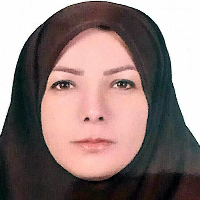The analysis of the role of traditionalists in the contemporary urbanism (an approach to achieve the models of realization of Islamic city)
Traditionalism as an approach in contemporary philosophy has a highly critical stance towards modernity. The opinions and critical views of traditionalists towards modernity in various fields, including the philosophy of art, have caused their views to be taken into account in the urbanism and architecture. Although almost none of the famous traditionalist theorists were architects or urban planners, their serious criticisms of modernity, has helped to shape the concepts such as the desanctification of the city space and the "secularization" of space and time. Also, Burkhart and Seyed Hossein Nasr works on Islamic art and the pathology of Islamic civilization have been created seriously prominent and influential in urbanism and Islamic architecture, especially in Iran. At the same time, the opinions of traditionalists have faced serious criticism. This article tries to make an assessment of the achievements and shortcomings of this school, especially in the field of Islamic Iranian urbanism, by examining the traditionalist viewpoints and the criticisms leveled at theme and analysis of the effectiveness and capability of traditionalist viewpoints in the process of realizing the Islamic-Iranian city. This article reviews traditionalism according to its terminological definition. The above-mentioned traditionalists have suffered extremes and excesses. In this article, it is tried to introduce other approaches of fundamentalist traditionalists who have expressed the comprehensive and deeper relation between Islam and the creation of artworks, architecture and urbanism. It is also necessary to introduce these approaches for further and complementary of this research. This research came to the conclusion that a large part of the achievements of traditionalism in contrast with modernity is in the position of criticism of modernity, using the method of library documents in the information gathering stage and the method of logical reasoning in the analysis and inference stage. In such a way that the pathology of the adverse consequences of modernity in urbanism and architecture has been able to inspire and motivate many thinkers, experts, professors and decision-makers; However, in practice and in terms of realization and achieving the Islamic city, it has not been very successful. In this text, an attempt was made by exploring and examining this issue to reach an approach for the realization of the Islamic city.
-
Develop a native model of a creative tourism city; Case study of Babolsar city
Nedabeygom Sharifian, *, Amir Gandomkar, Mohammad Masuod, Hamid Saberi
Quarterly of Geography (Regional Planing), -
Urban Planning and Loneliness: A Comprehensive Analysis of Indicators Contributing to the Loneliness Crisis
Farshad Tahmasebizadeh, , Mahmod Mohammadi *
Journal of Urban Studies on Space and Place, -
Investigating the factors affecting the socio-economic resilience of cities in the face of epidemics (case study: Shiraz city)
Mohammadreza Zamani, *, Zeinab Talebi
Research and Urban Planning, -
Street planning and design with the approach of Iranian Islamic art teachings
Mahdi Moharreri, *, Mohammad Naghizade,
Islamic Art Studies,



